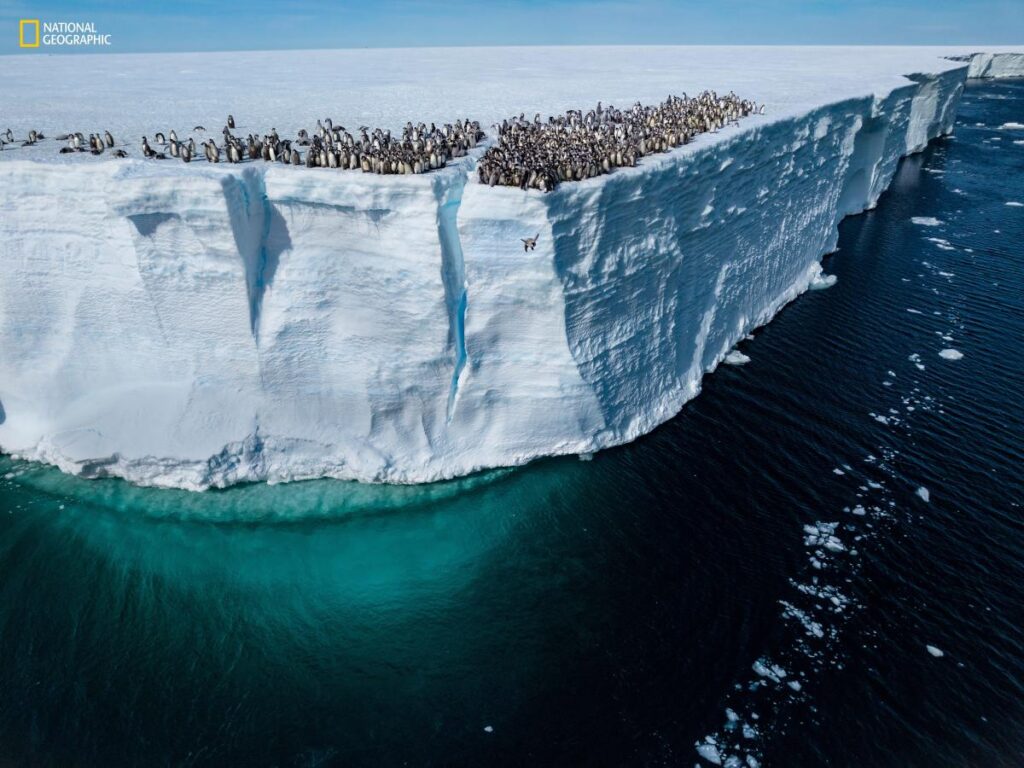In its December 2024 issue, National Geographic featured its esteemed “Pictures of the Year,” showcasing breathtaking images that highlight the beauty of wildlife, nature, scientific breakthroughs, and striking landscapes. The selection process was rigorous, with photo editors sifting through a remarkable pool of 2.3 million images submitted by photographers from around the world. This annual tradition allows the magazine to celebrate the powerful stories captured through the lenses of its photographers, whose work brings diverse narratives to life across global ecosystems. The selected 20 photographs represent a stunning array of moments that evoke curiosity and appreciation for the natural world, providing much-needed respite from the chaos of contemporary life.
Among the standout wildlife images is Ingo Arndt’s stunning portrayal of a wood-ant hatchling emerging from its cocoon. Collaborating with researchers from the University of Konstanz in Germany, Arndt constructed a transparent ant habitat to observe the reproductive cycle of wood ants in a controlled environment. His careful observation revealed the remarkable behavior of female colony workers as they attended to eggs and larvae, ultimately capturing the astonishing moment when a hatchling broke free, showcasing not only the beauty of nature but also the intricacies of ant life.
Christie Hemm Klok’s photograph of macaws at The Oasis Sanctuary in southern Arizona also stands out, highlighting the social nature of these magnificent birds and the challenges they face in captivity. Photographing in a sanctuary that houses around 800 birds, Klok captured a dynamic scene of Janet Trumbule, the sanctuary director, trying to coax the macaws with walnuts. This snapshot emphasizes not only the striking colors and expressions of the birds but also raises awareness about the welfare of captive animals and the difficulties they encounter when domesticated. It also illustrates the hard work being done to provide a safe haven for these beautiful creatures.
Another noteworthy image is John Stanmeyer’s capture of a simultaneous emergence of two distinct groups of periodical cicadas—brood XIII and brood XIX—after years spent underground. This rare event, which occurs only once every 221 years, was photographed in Springfield, Illinois, marking a significant moment in entomological history. Stanmeyer’s photo encapsulates the extraordinary phenomenon of cicadas, drawing attention to the cycles of life that govern nature and the aeons of time that it sometimes takes for certain species to make their presence known to the world.
Ami Vitale’s poignant image of a 70-day-old rhino fetus highlights conservation efforts aimed at saving the critically endangered northern white rhinoceros. After successful in vitro fertilization techniques showed promise, this photo symbolizes hope amid bleak circumstances as the last two northern white rhinos are cared for in Kenya. The bittersweet nature of this photograph—showcasing scientific advancement tainted by the death of the surrogate mother—serves as a reminder of both the fragility of life and the advancements that are essential for the survival of species facing extinction.
Bertie Gregory’s photograph capturing a young emperor penguin leaping off a 50-foot cliff for its first swim is not only visually stunning but also illustrates changing behaviors in wildlife due to climate change. Following the penguins with a drone, Gregory documented this thrilling moment, which is becoming increasingly common as ice shelves continue to melt. The image speaks to the broader implications of environmental change on animal habits and showcases the courage and instinct of young animals as they embark on critical life experiences.
Finally, the image of a rarely seen black tiger in Similipal Tiger Reserve, photographed by Prasenjeet Yadav, draws attention to the unique beauty and ecological significance of these rare creatures. Yadav’s dedication and methodical approach, utilizing camera traps over a 60-day period, culminated in capturing an elusive young female with distinctive merged stripes. This photograph serves as both an artistic marvel and a call to action, raising awareness about species diversity within tiger populations and the conservation efforts that protect these magnificent animals in their natural habitats. Collectively, these images not only represent artistic excellence but also underline the pressing need for conservation and environmental awareness in an ever-changing world. To explore all 20 of National Geographic’s Pictures of the Year, readers can visit NatGeo.com/Photos.

